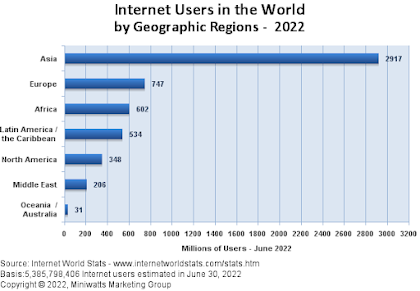7). Recruitment Influences by Covid19
Last couple of years were tough on recruiters and HRM sectors with the influence of COVID 19. The pandemic and its repercussions devastated some talent acquisition teams, heaped new demands on others, and proved to be a historic change agent as virtually recruiting and onboarding a remote workforce became the norm for many.
E-recruitment practices
Kucherov, D., & Tsybova, V.
(2021) presented that the e-recruitment methods which include internet based
and internal technology-enabled solutions, are to be used in the overall
context of human resource management (HRM) digitalization. E-recruitment
methods are associated with the favourable outcome. However, e-recruitment
utilization does not serve as a bridge between e-recruitment techniques and
outcomes. E-recruitment aid not only in lowering the cost of advertisements and
selection procedures but also in eliminating paper works.
Daniel Chait, CEO of New York
City-based Greenhouse, one of the fastest-growing recruiting software
providers, envisions the talent acquisition function playing a major role in
what he calls the "great rehiring."`
Since COVID appeared, as majority
of recruitment and selection practices were provided by e-bots or via ATS
(application tracking system). Video interview usage went up from 22% in 2019
to 58% this year (McKinsey & Company, 2020).
Phil Gardner (2021) expedites
that, “Approximately 82% of respondents indicated that they employed digital,
or AI assisted technologies in some steps or all of their recruiting process”.in
worldwide. Furthermore, Phil Gardner mentioning that COVID-19 accelerated the
adoption of virtual recruiting formants much sooner than the results from our
Trends survey several years ago. In the earlier survey projections estimated
that the adoption of digital technologies would occur gradually until
accelerating between 2025 and 2030. Well, 2030 is now today! While some
organizations may not be totally embracing virtual technologies, these
technologies are here to stay and will continue to alter the recruiting process
post COVID.
The Role of social media in pandemic
Despite being around for years,
social media is only now starting to play a larger role in recruitment.
With the emergence of the
COVID-19 outbreak, studies have utilized web-based participant recruitment
platforms (Geldsetzer P, 20202) or informal social media campaigns to collect
national data describing COVID-19-related knowledge, perceptions, and behaviours
(Zhong, 2020).
Many of the recruiters and
recruitment managers we interviewed believe that social media is an excellent
tool for quickly spreading the word about job openings. Whether for promoting
job openings or virtual hiring fairs, social media has become a top search
engine for candidates.
Figure 1 shows that most of candidate
with age of 18-34 found their last job through social media recruitment and 82%
of companies in United States recruiting their employees through social media.
Figure 1

Source: https://www.huemanrpo.com/resources/blog/how-recruitment-has-changed-post-covid-19
According to the HireVue, Linkedin profile 86% of
organizations adopted virtual hiring during covid 19 pandemic and 81% of talent
professionals believe that virtual recruiting continues post covid also.
Figure 2

Source: HireVue, Linkedin
Conclusion
Coming forward from post Covid 19 pandemic
impact, in coming days, bringing new talent, and retaining and upscaling that
talent will become top priority for any HR executive which potentially will drive
the success of business transformation as a whole, not just the HR function.
It’s imperative to acknowledge and will be important to establish long-term
strategies for greater resilience and to apply lessons learned from the CODIV
19 Pandemic experience to create a systems and talent roadmap that better
prepares the company for future disruptions.
References
- Geldsetzer P. Use of rapid online surveys to assess People's perceptions during infectious disease outbreaks: a cross-sectional survey on COVID-19. JMed Internet Res. 2020;22(4):e18790.
- Kucherov, D., &Tsybova, V. (2021). The contribution of e-recruitment practices to e-recruitment outcomes in Russian companies. Measuring Business Excellence, ahead-of(ahead-of-print). https://doi.org/10.1108/mbe-02-2021-0017.
- McKinsey & Company (2020). Beyond hiring: How companies are reskilling to address talent gaps. New York. Retrieved from https://www.mckinsey.com/~/media/McKinsey/ Business Functions/Organization/Our Insights/Beyond hiring How companies are reskilling to address talent gaps/Beyond-hiring-How-companies-are-reskilling.ashx. Access: 29.11.2020.
- Pil Gardner (2021), Recruiting Trends 2021-2022, Recruiting Survey & Report, Collegiate Employment Research Institute Michigan State University.
- Roy Moaurer (2021), 2021 Recruiting Trends Sharped by the Pandemic. Internal hiring, DE&I goals and virtual processes will be key this year. < https://www.huemanrpo.com/resources/blog/how-recruitment-has-changed-post-covid-19>.
- Zhong B-L, Luo W, Li H-M, Zhang Q-Q, Liu X-G, Li W-T, et al. Knowledge, attitudes, and practices towards COVID-19 among Chinese residents during the rapid rise period of the COVID-19 outbreak: a quick online cross-sectional survey. Int J Biol Sci. 2020;16(10):1745-5.


Interesting article. Pratt and Florentine (2022) stresses that pay is only one component of the equation. Compensation, benefits, work atmosphere, possibilities for advancement, and incentive designs all play a role. In Silicon Valley, for example, if a highly brilliant tech employee isn't completely content, he or she can just go across the street for a new and better position. This is especially true in a post-COVID virtual world with no geographical constraints.
ReplyDeleteExactly Aruna, more employers indicated that they were taking advantage of digital opportunities to expand their reach for talent. As one recruiter offered in a comment, “Today, we can recruit students anywhere in the country. Though we still emphasize the regions where we have offices and facilities, we are accepting candidates regardless of geographic location.” The recruiting management systems that campuses utilize to support their students’ job search are now open to all students and employers, marking the growth of a more national college labor market (Phil Gardner, 2021).
Delete